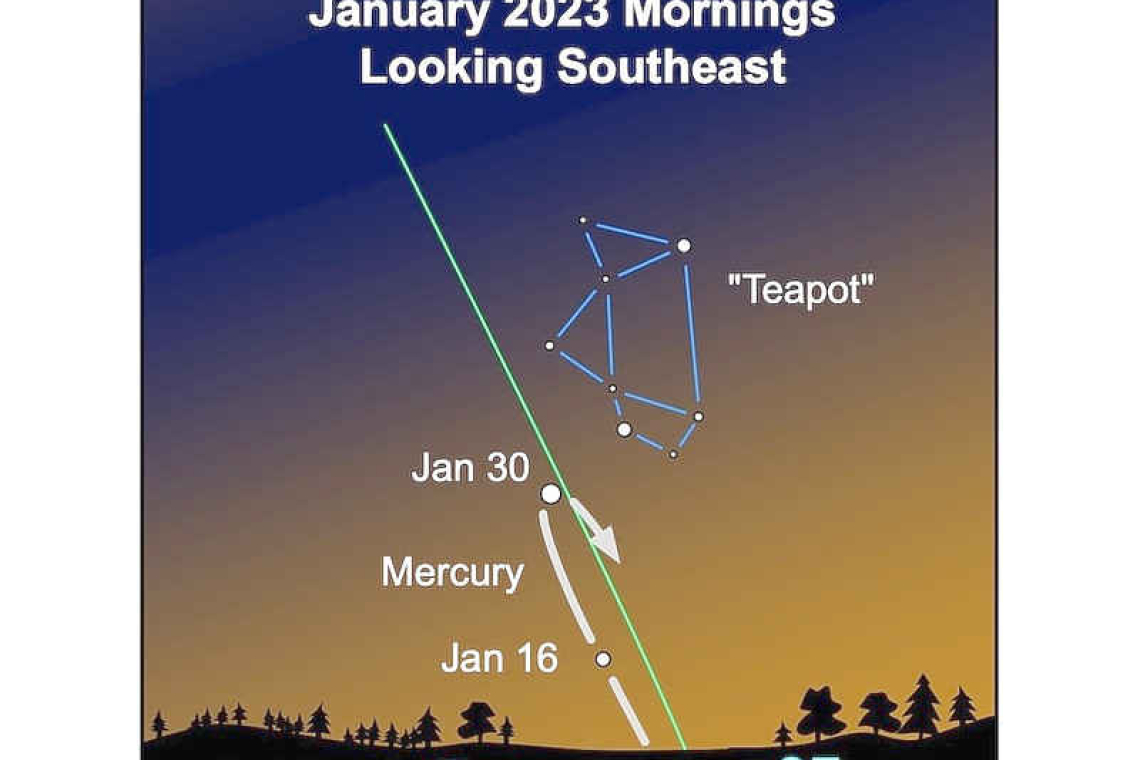Looking up at the Night Sky
~ St. Maarten’s Backyard Astronomy for January 27 - 29 ~
Sun rises at 6:465am
Sun sets at 6:04pm
Lunar phase: 2nd quarter, waxing gibbous
Moon rises at 11:48am
Moon sets at 12:53am, Sunday
This weekend, we are blessed with half-moon hanging in the western sky after sunset. And this moon will be aligned with several planets, allowing for easy identification, for those in the know. That includes you, since you are reading this column! Good on ya!
So, find a good view of the western sky after sunset, and then locate the moon. Directly below the moon, a fair distance away, you’ll find Jupiter – big and bright, so hard to miss (check it out with binoculars). Below Jupiter, look for Saturn – the ringed planet is also a great place to focus a telescope or binoculars. Drop down a bit farther and find the Evening Star, aka Venus, always big and bright. If you are lucky, you might see Mercury just below Venus. However, both these planets will be setting soon after sunset, so don’t delay. Saturn hangs around until it disappears below the horizon around 9:00pm, and Jupiter sets a while later, around 9:45pm.
Meanwhile, above the moon, follow the same imaginary line across the starry sky and you arrive at the red planet, Mars. At sunset, Mars can be found high overhead between the bright star Aldebaran (the eye of the bull, in Taurus) and the tiny jewel-like star cluster called Pleiades.
Mercury, while tiny and hard to spot, is currently reaching its greatest elongation, or angular distance, from the sun. This officially happens on Monday, January 30. Across the mornings, if you watch and keep track, you will notice Mercury make a U-turn, known as retrograde motion. Check the images from EarthSky.net, which we use with their permission to better understand what you should see. The diagrammatic illustration is courtesy of John Jardine Goss.
Remember, you have to watch on sequential mornings, making note of the planet’s apparent location against visible landmarks such as tall trees or rooftops. Also, you as the observer should be at the same viewing position day after day. Why not draw a sketch and track the planet’s position over subsequent viewings? You can label the dot that represents Mercury with the date of each viewing. Email me your drawings – I’d love to see what you see!
Thank you for keeping up with the Night Sky articles, backyard astronomy designed for St. Maarten sky viewing. FYI: If you are out later on in the week, note that each star rises about four minutes earlier each day than written here, and the moon rises 50 minutes later. Night Sky is researched and compiled by Lisa Davis-Burnett. Earthsky.org is a key resource for information and images. Questions or comments? Email This email address is being protected from spambots. You need JavaScript enabled to view it.







